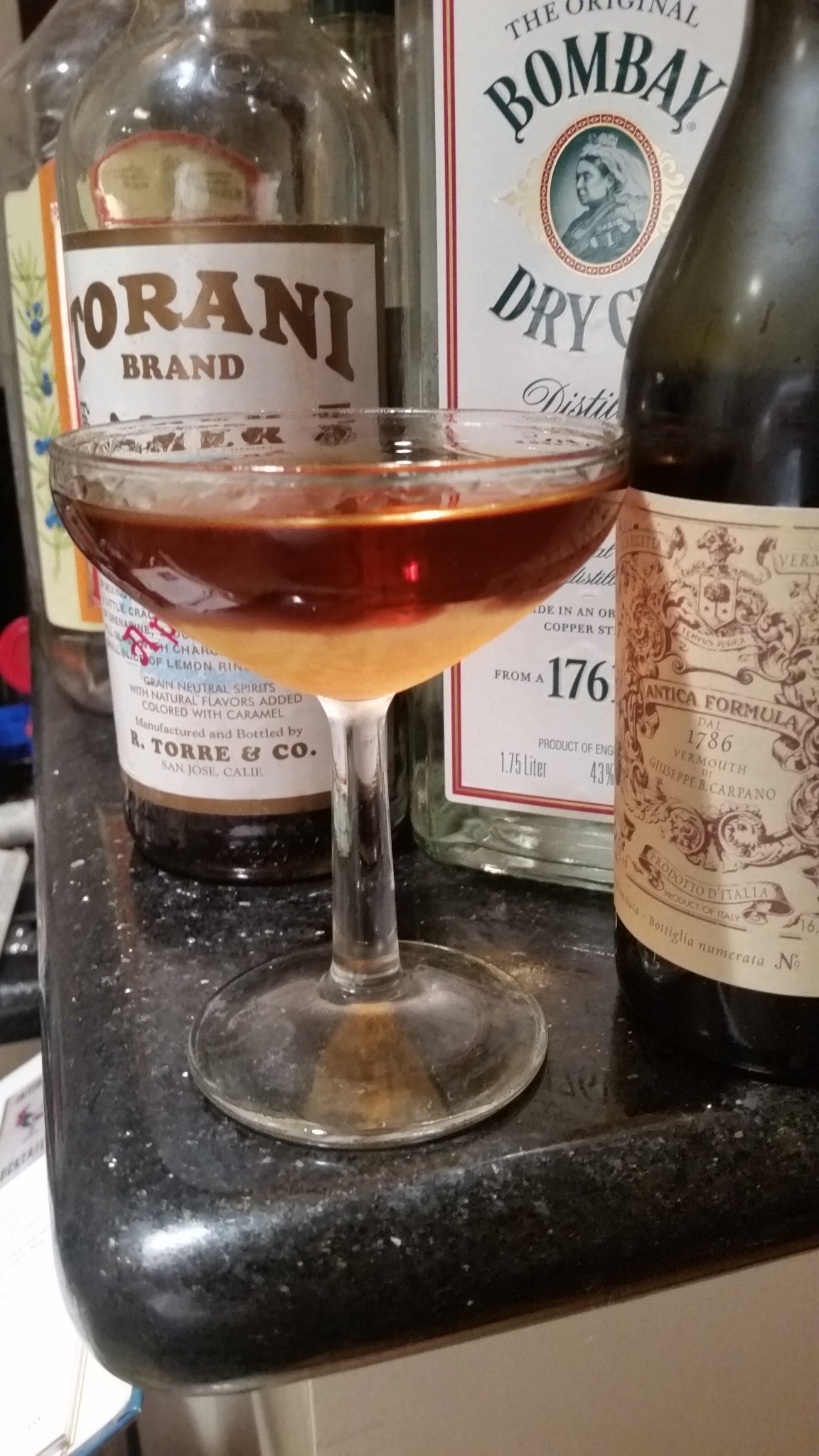Drink of the Week: The Fin de Siècle
 “Fin de siècle” is French for “end of the century, which means that we’ve all missed our opportunity by 15 years to have a Fin de Siècle at the most appropriate point possible, assuming we were old enough to drink in 2000. Or, if you want to look at it the other way, we’ve all got 85 years to work on preparing the perfect Fin de Siècle in time for 2100.
“Fin de siècle” is French for “end of the century, which means that we’ve all missed our opportunity by 15 years to have a Fin de Siècle at the most appropriate point possible, assuming we were old enough to drink in 2000. Or, if you want to look at it the other way, we’ve all got 85 years to work on preparing the perfect Fin de Siècle in time for 2100.
The truth is, however, that the real roots of this post go back not to Y2K but to last week. My copy of Ted Haigh’s Vintage Spirits and Forgotten Cocktails having been destroyed by a backed-up sink…yes, I leave cocktail books on the sink sometimes and, yes, I’m paying the price…I found myself seeing a number of somewhat similar cocktails in Robert Hess’s accurately named The Essential Cocktail Guide. Like last week’s drink, today’s drink contains sweet vermouth, orange bitters, and Torani Amer, substituting for Amer Picon — easily the most commonly called-for modern day cocktail ingredient that you can’t find anywhere in North America.
The main difference, aside from the proportions, is that our base spirit is changed out from whiskey to gin. The result is a bit lighter and drier, but no less tasty and sophisticated.
The Fin de Siècle
1 1/2 ounces gin
3/4 ounce sweet vermouth
1/4 ounce Torani Amer (or Amer Picon, if live in Europe or own a time machine)
1 dash orange bitters
Combined all ingredients in a cocktail shaker or mixing glass with plenty of ice. Stir vigorously — or shake, gently, if you’re feeling rebellious — and strain into a chilled cocktail glass. Toast anything that has come to conclusion or shortly will, including your tasty Fin de Siècle. Nothing lasts forever, after all, least of all a good cocktail.
*****
I saw a few recipes online for this that mentioned Plymouth Gin, but most people seem to use your more garden variety London Dry style gin. I used premium (but I guess not super premium) Bombay Dry Gin and good ol’ value-priced Gordon’s Gin, both with results that were more than satisfactory.
I actually found that,much more than with the gin, my choice of sweet vermouth made a far more dramatic difference in the flavor. I was very happy with my Fin de Siècle when I used Noilly Pratt — my personal default sweet vermouth in slight preference to Martini or Cinzano. Still, there was no topping the slightly bitter, almost chocolate-like undercurrents of Carpano Antica; sometimes you just can’t argue with the cocktail snobs. If you want a sweeter drink that’s nevertheless not too offensive, I had decent luck replacing Torani Amer with Amaro CioCiara, suggested by some as another Amer Picon substitute.
Finally, yes, you can shake this drink but that’s not my preference this time around. For starters, this is second cousin to a gin martini. (We’ll be getting to it’s first cousin very soon). I really do think there may be something to the idea that shaking can “bruise” gin, i.e., add a slightly unpleasant bitterness. Mainly, though, I don’t think the additional water/ice crystals that shaking generates really flatters the Fin de Siècle. I think this may be a drink that wants to be cool, but not ice cold.
Now, have a great Memorial Day weekend. Maybe it’s a good time to remember what life could be, if only we were all nice enough and smart enough.
You can follow us on Twitter and Facebook for content updates. Also, sign up for our email list for weekly updates and check us out on Google+ as well.

 For the last four years or so I’ve had the privilege of attending the annual
For the last four years or so I’ve had the privilege of attending the annual 








